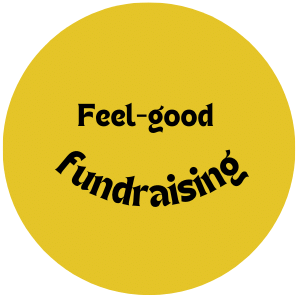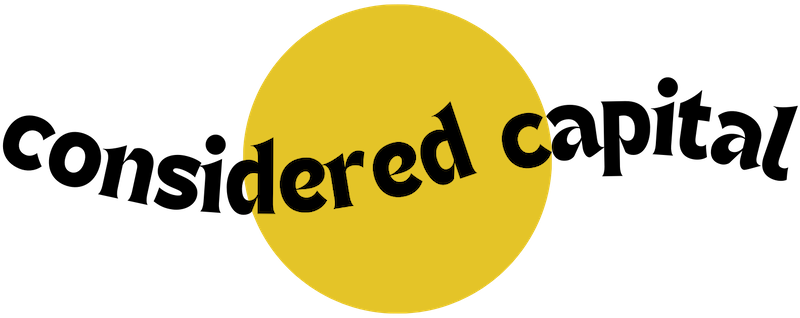5 Minute Funding Diaries – Laura Harnett
5 Minute Funding Diaries
with Laura Harnett, founder of Seep
Laura Harnett discusses the challenges of funding for DTC brands, particularly inventory and stock funding, which can be expensive through revenue-based finance. She shares her experience with grant funding for product innovation and small friends and family fundraises, emphasizing the importance of evaluating the hierarchy of funding options and considering the merits of each source.
You can read the interview or watch it below.

Tell us a bit about your idea or organisation
My name is Laura Harnett and I'm the founder of Seep. I spent about 20 years in consumer and retail so both as a operator and then also as an as advisor for Deloitte and Booz; my last role was a director for Selfridges. This was probably a bit bonkers, but I kind of threw all of that big corporate 'safe career' and decided to become an entrepreneur - but I just went for it and decided that I could be 'the sponge lady' and set up Seep.
Seep's mission is to shake up the dusty household essentials category for good of people and planet, I basically saw a gap in the market. There's quite a few eco-cleaning spray brands and eco-chemical brands. The second half of the cleaning journey, which is kind of what you use with it, all the tools just, it was all very much plastic, old fashioned plastic brands like Vileda and Brillo.
What's the biggest funding challenge you’ve had to overcome?
So biggest challenges for funding, I think for a DTC brand, the biggest challenge, there are two:
One is funding inventory and stock. And so actually, you're buying 3-6 months ahead of when you think you might actually get the cash in the bank. And obviously, as you're growing, you're funding a big kind of revenue number 3-6 months down the line. And I think that's been really challenging. Investors typically don't want to fund inventory, although they probably know that a bit of it can be funded that way. Revenue-based finance is pretty prohibitive, you know, they charge roughly 10% to fund inventory, so no one really wants to do it. Eventually, you basically get, you can get access to bank finance, but only once you've got some good track record behind you.
I think the second challenge is as a sole founder is that I don't have a co-founder, we don't split things, so I'm having to run quite a bit of the business day-to-day. I've got an amazing team who really helped with all of that, and, but it's it just takes time away from the business to fundraise. It's not been something up till now that I've really enjoyed that much.
How did your funding plan change through graduating from the Alt Funding School?
We've explored revenue-based finance, both with the kind of specialists out there. We've looked at things like Clearco and Outfund. But actually, what we found is that places like PayPal and Amazon actually give you much faster decisions. They have even more immediate access to what kind of revenues you've got coming in.
We found that they've both been more competitive than the Outfunds of the world and the others.
So that's what we've explored, we've had a bit of grant funding, which is for product innovation, which has helped fund development and that sort of thing.
We've put director loans in and we've done a small friends and family fundraise so far. We've thrown lots of things at it.
Raising equity finance isn't the be all and end all
Really understanding the kind of [funding] hierarchy, that raising equity finance isn't the be all and end all; I think that was probably the number one thing.
There's a huge amount of kudos that goes to companies that raise lots of equity funding, and what I learned was that that's probably one of the most expensive forms of funding available.
You see a lot on LinkedIn; the massive raises, and the valuations and there's a huge amount of kudos that goes to companies that raise lots of equity funding, and what I learned was that that's probably one of the most expensive forms of funding available. But unfortunately, when you're at our size and growing, I do think if you want bigger chunks of cash to really grow ahead of the sales curve, it's pretty difficult to get enough of the other alternative sources of funding to get that far ahead, for real proper growth.
I think I was intrigued about the [funding] alternatives and I think there was just very little chat about it. There's not that much information out there about what the other sources of finance are, or a way of evaluating what the differences are or what the merits are of one versus the other.
I got something out of [The Alternative Funding School] as a founder definitely. But I'm also an angel investor - I was until I set up Seep. Quite a few of my portfolio companies I've invested in have also been quite interested in [alternative funding] and so I've been able to share what I've learned, so it's really helped on both fronts.
Ways we can support you on your fundraising journey
If you're ready to find your fundraising confidence, then we provide products and programmes to support you along the way. Check out our current offerings below.

Hands-on support for purpose-driven organisations raising mission-aligned funding all over the globe. 97% of alumni would recommend us to founder friends.

Never miss a UK funding opportunity again. Search for new grants, accelerators and more using our exclusive LIVE Funding Database which is updated weekly and curated for our community fundraising in the UK.

If you are looking for an introductory course into raising funding as an impact organisation, this is for you. Identify the best next step on your fundraising journey and meet incredible purpose-led founders along the way.

Connect and learn
Accelerators & Funders
contact@consideredcapital.io
Log in to our other platforms below
